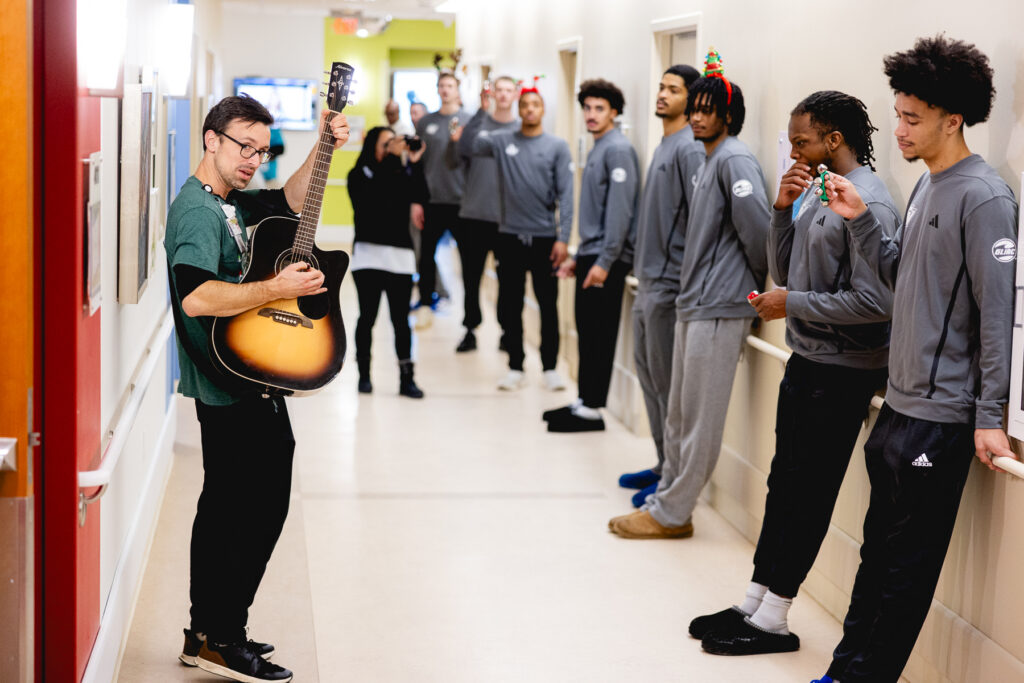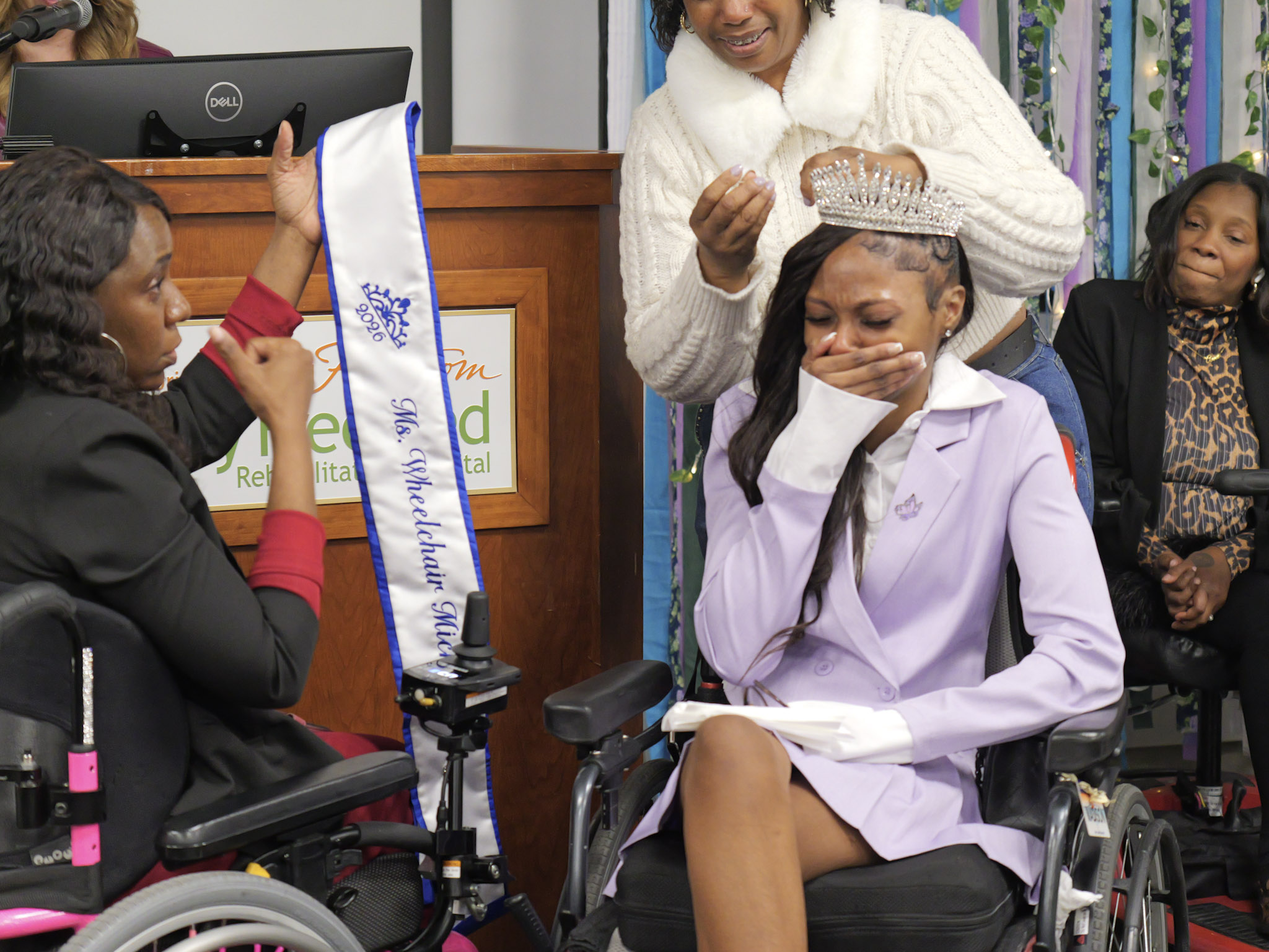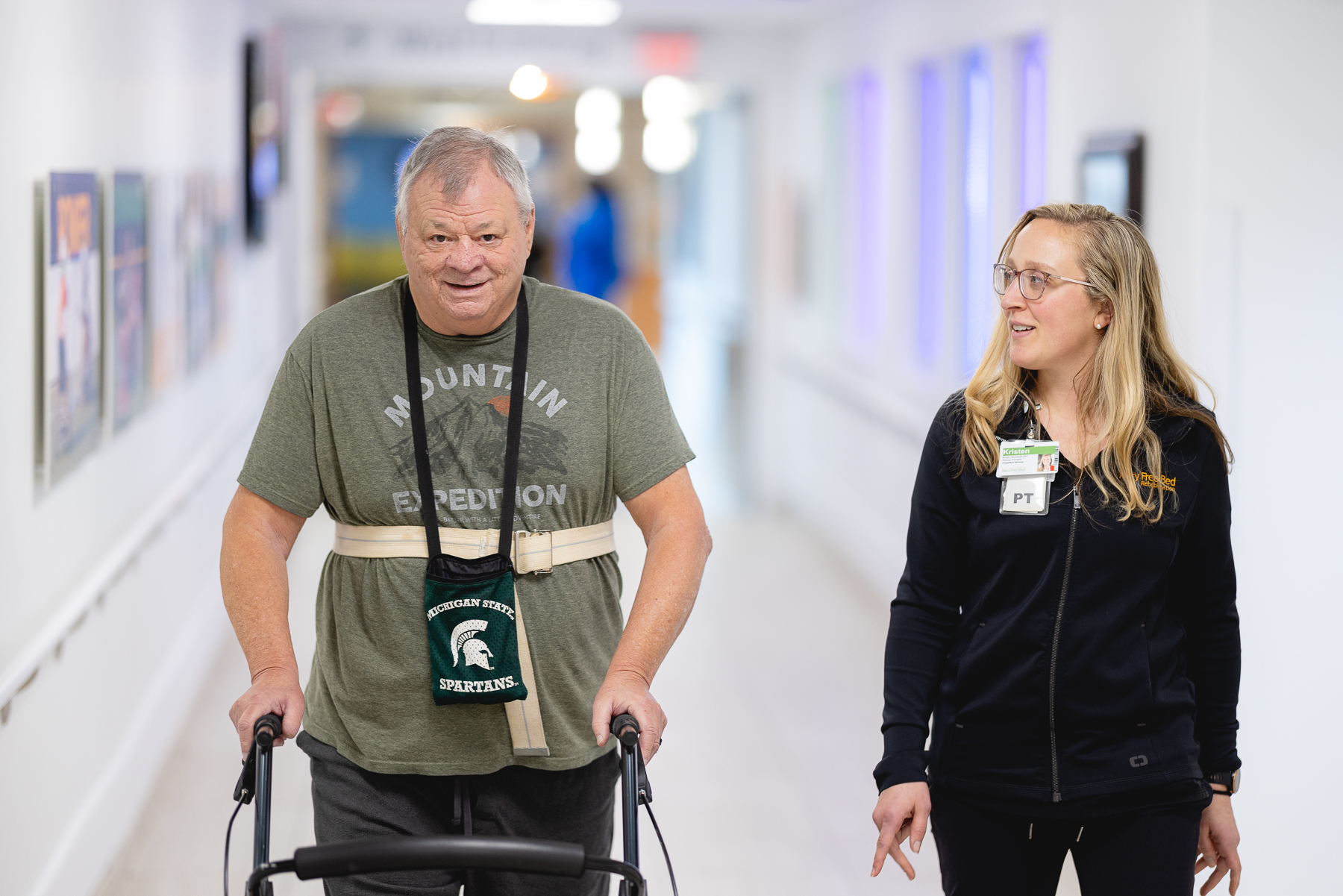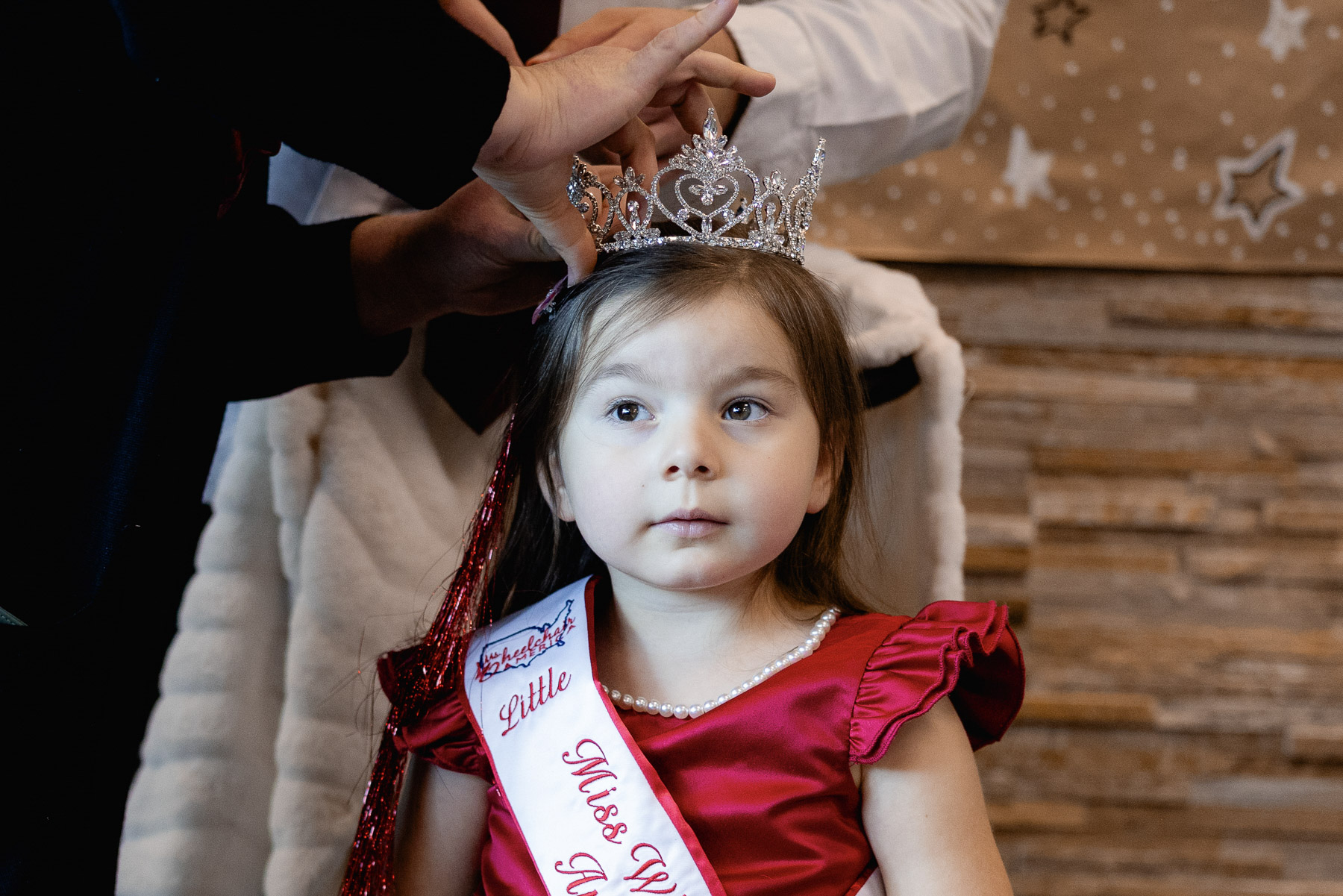The holidays are a time for family, warmth and togetherness, but for patients at Mary Free Bed recovering from complex conditions, including brain and spinal cord injuries, being away from home can be especially difficult. That’s why team members work hard to spread holiday hope and cheer for those who need it most.
Thanksgiving Therapy Activities for Pediatric Patients
On Thanksgiving Eve, Mary Free Bed’s youngest patients at the Mary Free Bed Grand Rapids Campus not only got to enjoy a Thanksgiving meal – they helped make it happen. The kids worked alongside their pediatric therapy teams to prepare a traditional Thanksgiving dinner. The experience in the kitchen allowed kids to practice skills they’ve been working on in therapy and enjoy the holiday spirit. From mixing up cheesy potatoes, to piping deviled eggs, everyone embraced the spirit of gratitude and independence that rehabilitation fosters.
After finishing their duties, the kids got to join their families for a delicious meal of turkey, stuffing, mac and cheese, green bean casserole, deviled eggs, rolls and cranberry sauce. And of course, pie for dessert.
“That’s kind of what we do best here at Mary Free Bed. We can tailor our therapy to meet your needs. We do that at the same time as offering the therapeutic piece,” said Penny Adams, occupational therapist and team lead for pediatrics.
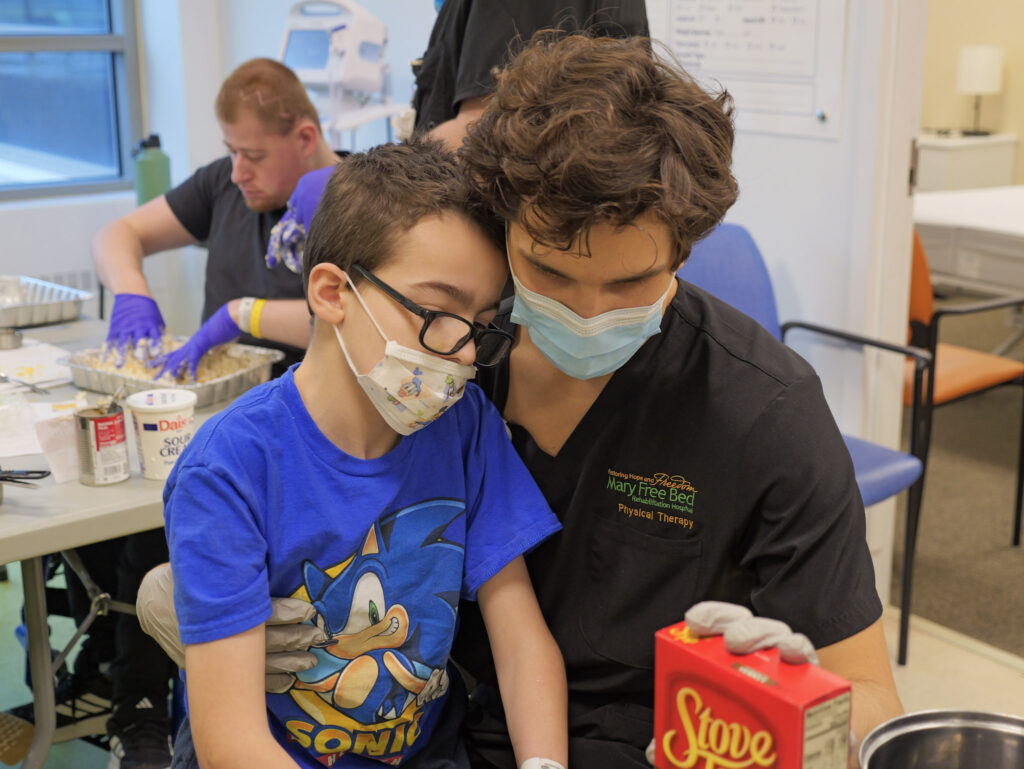
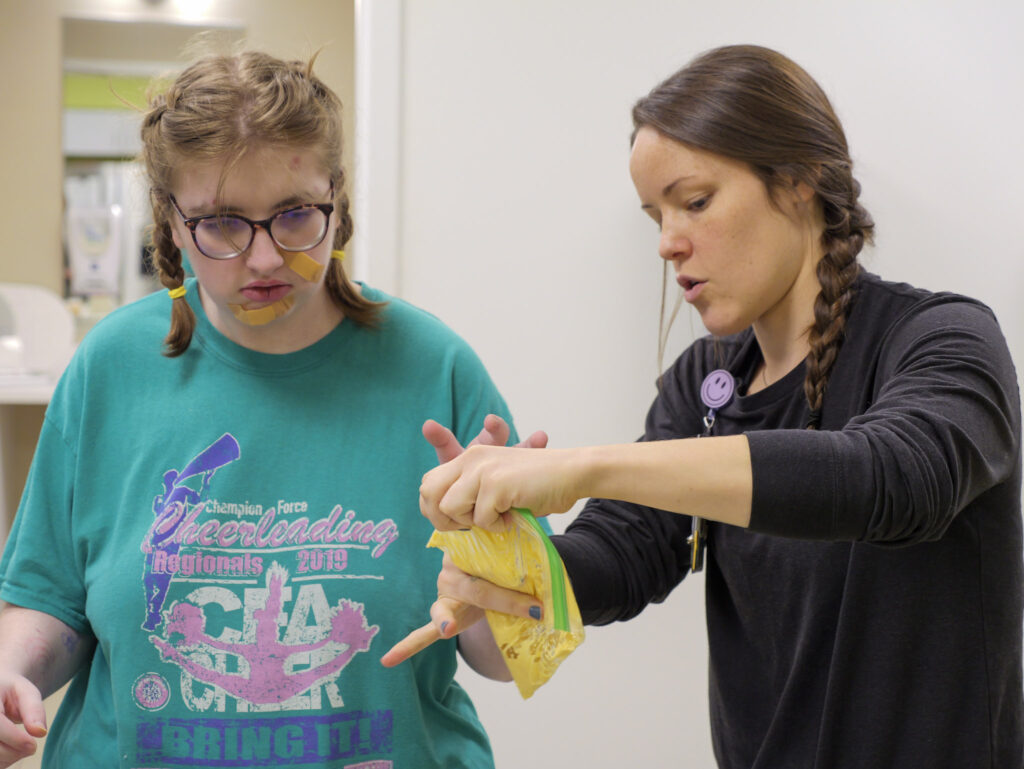
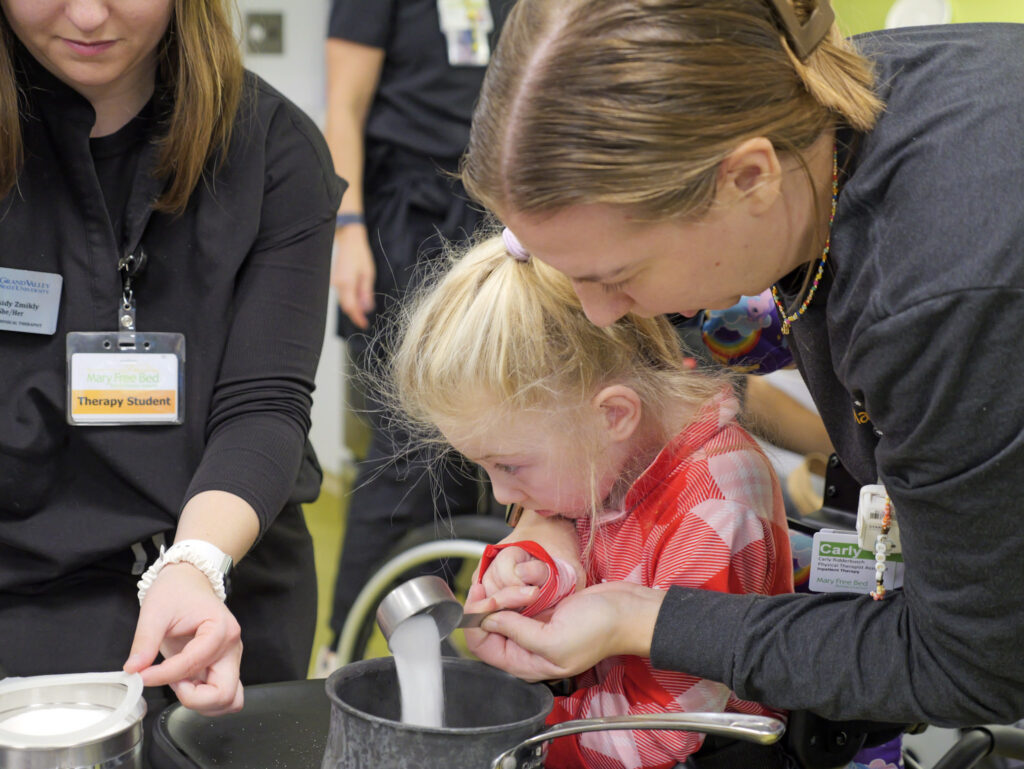
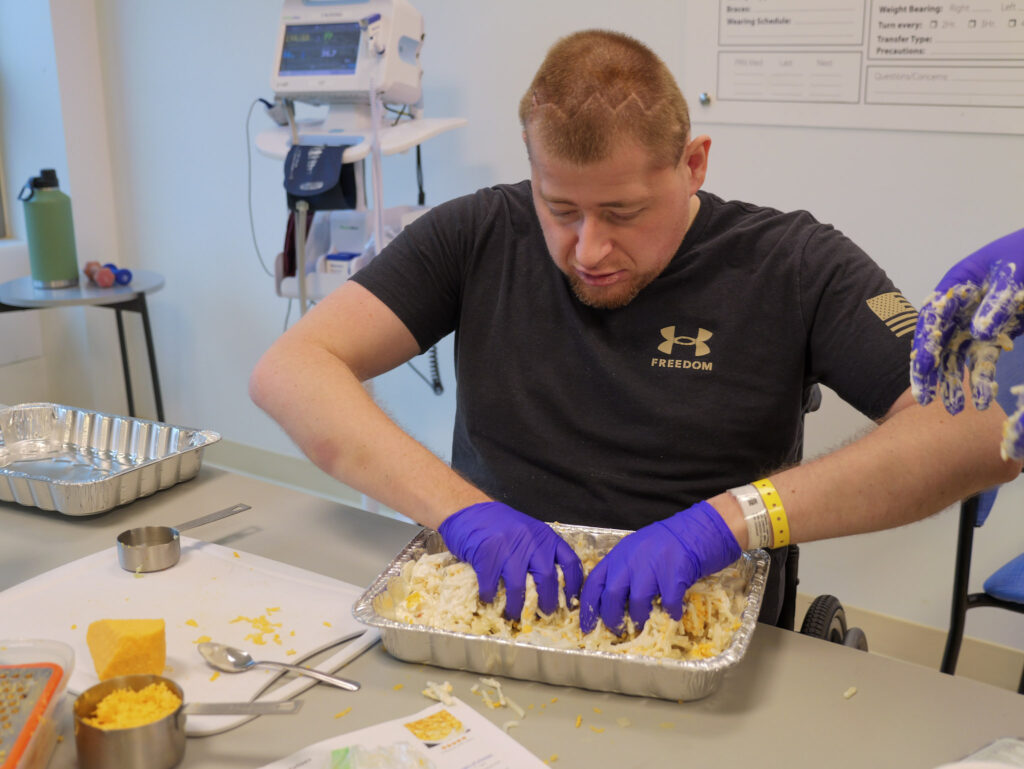




“Deck the Halls” Returns
The Thanksgiving festivities were just the beginning of a season filled with joy at Mary Free Bed. Next came a hospital-wide “Deck the Halls” celebration. The Recreational Therapy Team knows when people engage in activities they enjoy, it can significantly improve their health and well-being. There are countless ways to celebrate the holidays in West Michigan, but the Recreational Therapy Team works to bring that holiday cheer directly to the patients they serve, allowing them to create lasting memories with their families. Highlights from this year’s “Deck the Halls” included, carolers, hot cocoa, music therapy and crafts. The abundance of puppy cuddles, thanks to West Michigan Therapy Dogs, made the evening unforgettable.
“Deck the Halls” was made possible thanks to support from several community partners, including AdvisaCare, CareLinc, Cavallo and Consumers Credit Union.
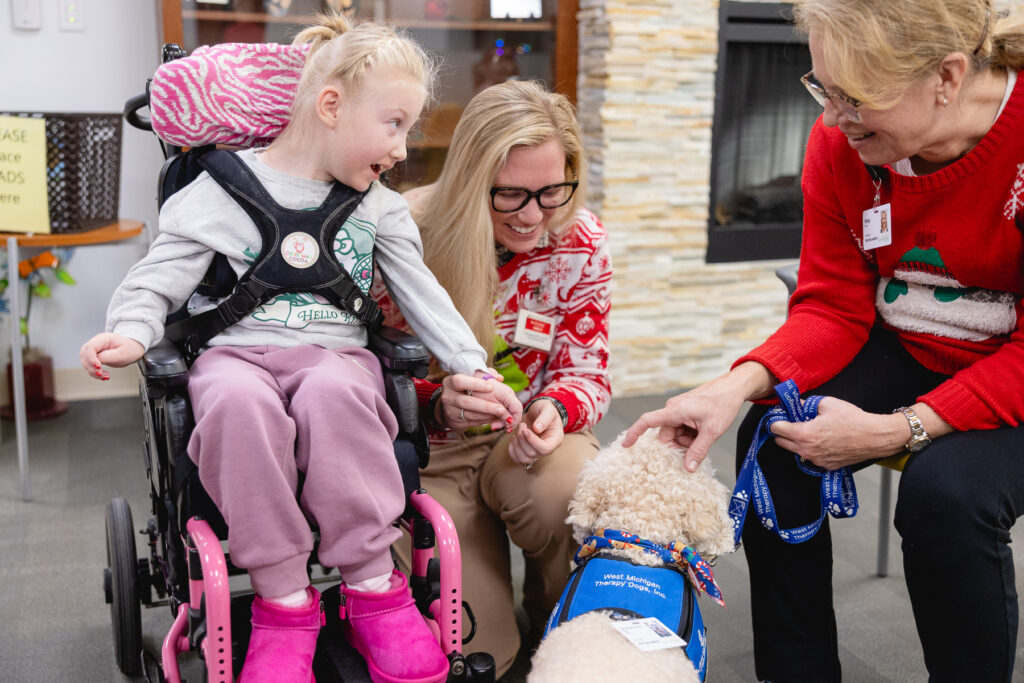
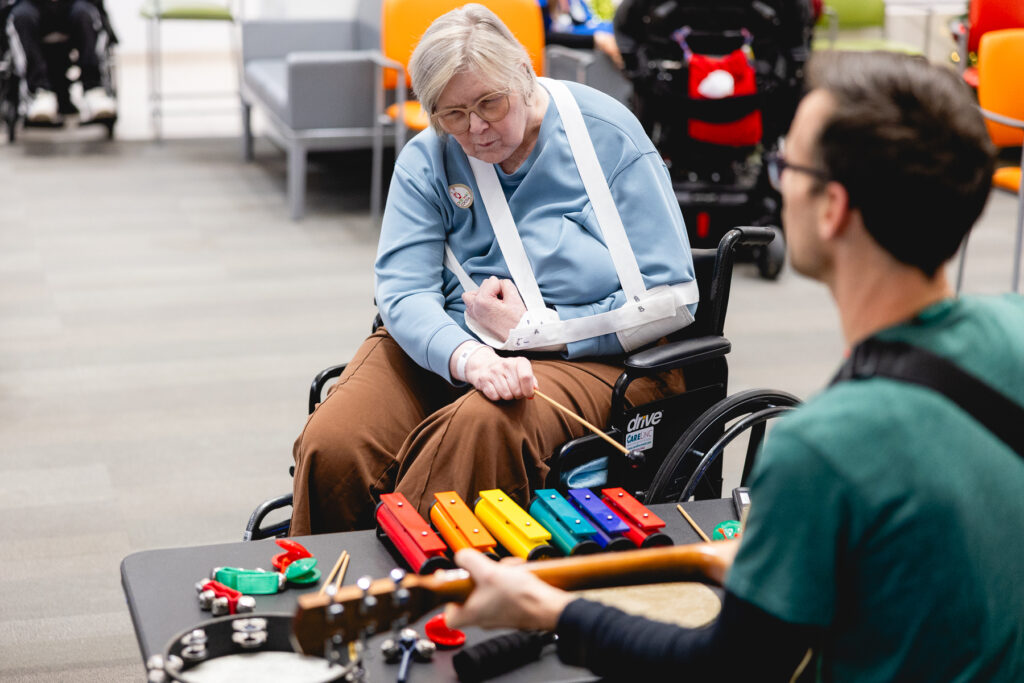
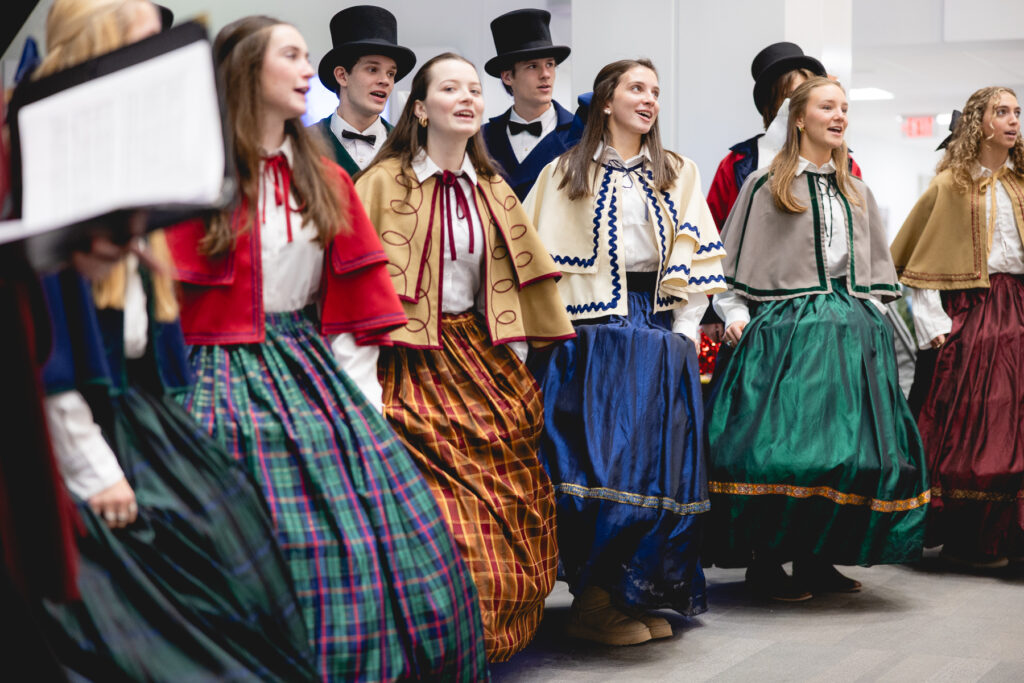

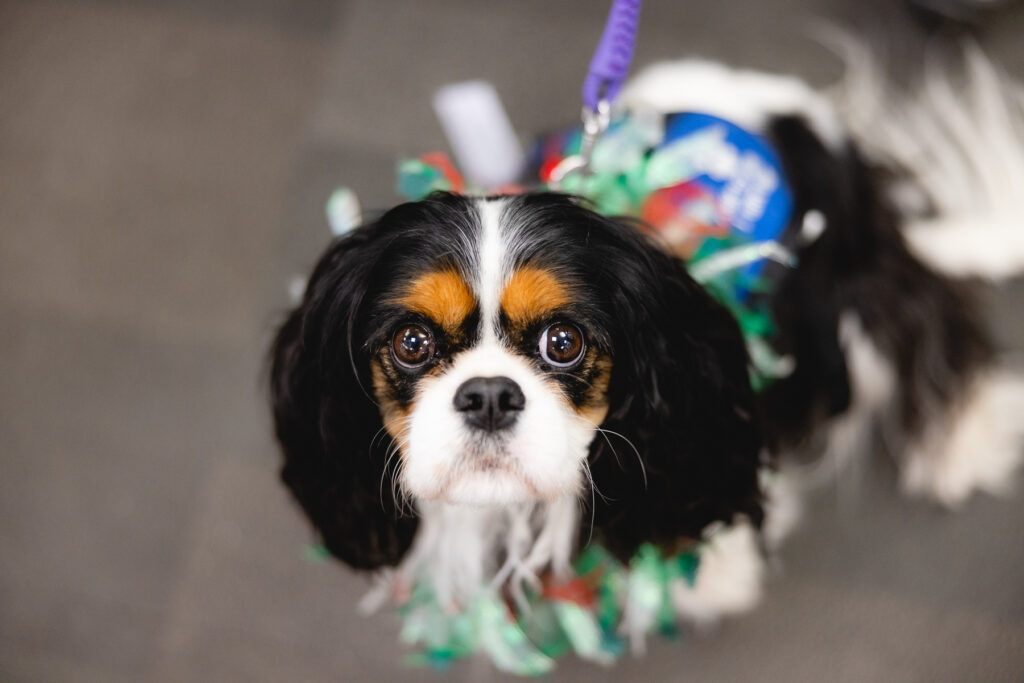
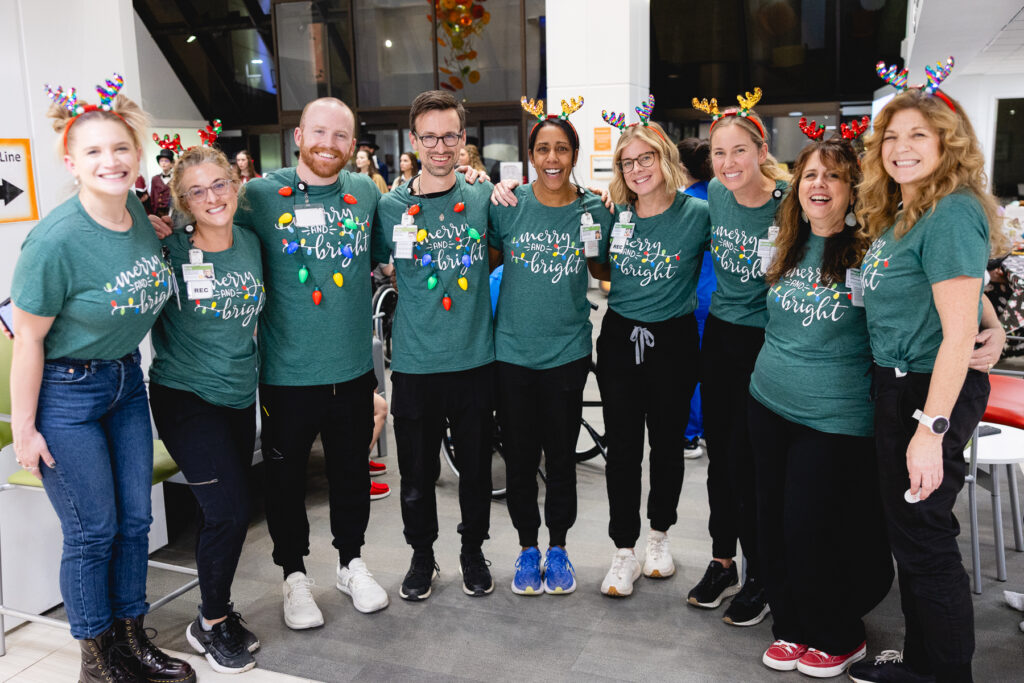
Full Court Carols
Spreading joy is a team effort, and this season, Mary Free Bed had some special teammates. For the fourth year in a row, players from the Grand Valley State University Men’s Basketball Team joined the festivities, filling the hospital’s halls with carols for patients and team members to enjoy.
A total of 16 athletes and their coaches worked their way through the hospital, singing classics like “Jingle Bells,” “We Wish You a Merry Christmas,” “Deck the Halls” and “This Christmas.” Mary Free Bed music therapist Peter Muszkiewicz accompanied the athletes on guitar as the men sang and tapped along with bells and tambourines.
“We want to make an impact on other people’s lives. Our coaches always say that they recruit the high- character individuals, so we take pride in trying to be good people. It’s fun to do that together,” said GVSU sophomore Matthew Elderkin.
From shared meals to music and laughter echoing through the halls, these celebrations remind us that healing isn’t just physical; it’s about hope, community and spending quality time together. This season, we’re grateful for the patients who inspire us, the families who trust us and the partners who make it all possible.
